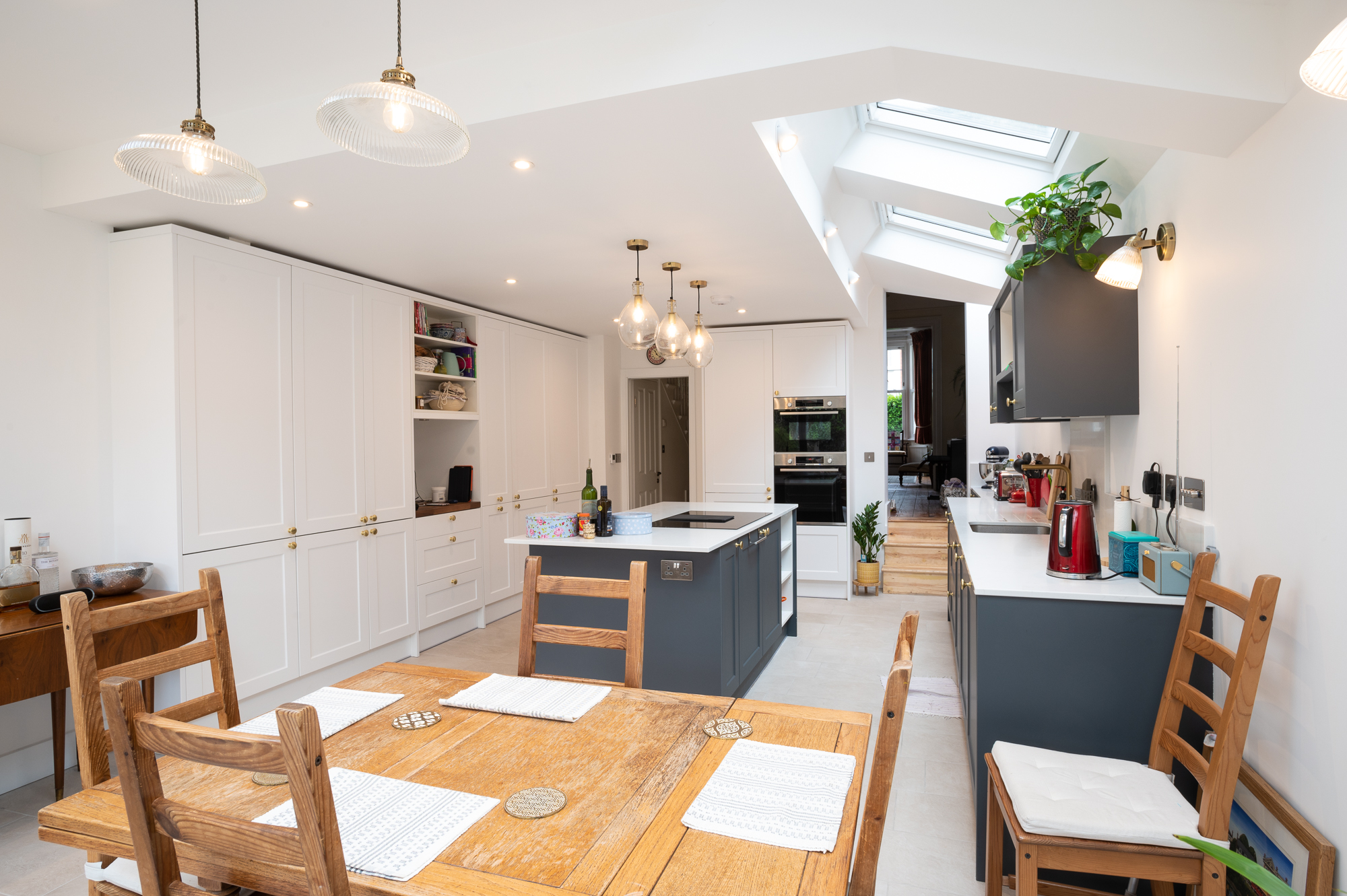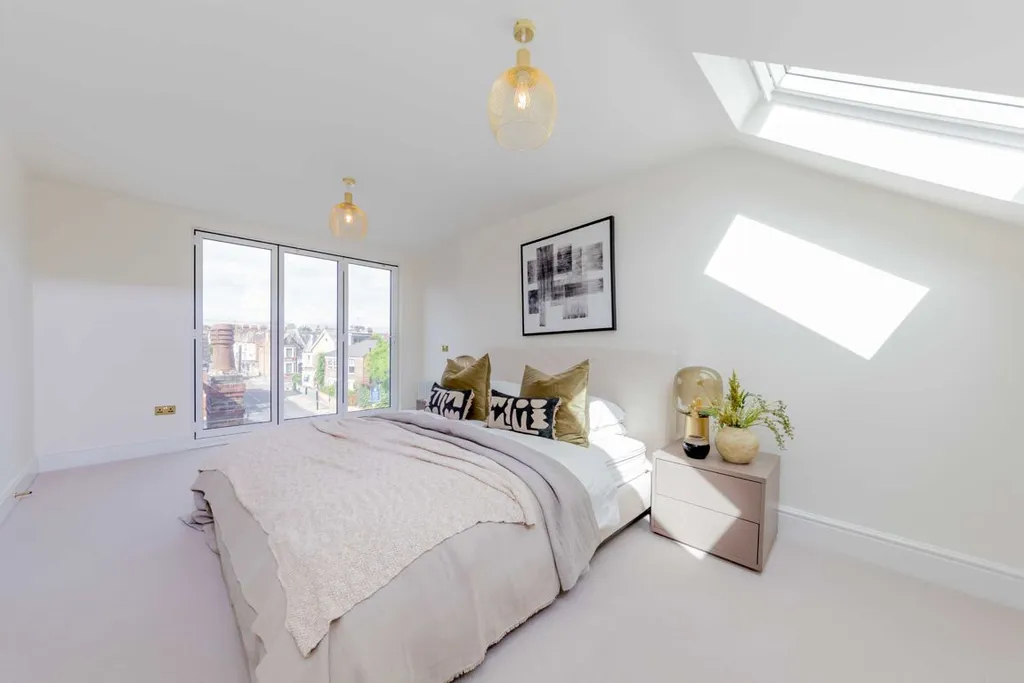Home extensions have long been the go-to solution for homeowners looking to upgrade their homes. But now, with the addition of energy-efficient systems, your home extension can not only help expand the floor space in your home but can also help increase your savings!
Not sure where to start? Here’s a quick guide to help you get ahead:
5 ways to ensure your extension is energy-efficient
While there are numerous ways in which you could make your home extension energy efficient, here are 5 sure-fire ways to save the planet and some money to boot!
1. Planning, planning, planning
We always recommend planning ahead.
Naturally, any construction project requires a good deal of planning; from its budget & design to its build & handover.
Don’t wait until your project has reached its final stages to decide on the details like the type of insulation you want or the design of an additional rooflight. Considering energy efficiency in your initial plan makes the process faster and more seamless.
Plan ahead to make sure all aspects of the design incorporate energy-saving strategies. This can include:
- The type of insulation you use
- The heating systems that need to be upgraded
- The design of the room to ensure sufficient sunlight and ventilation
- The installation of solar panels and low-flow taps to generate power and save water consumption
It all matters, and therefore, must all be considered.

2. Choose your materials with care
The concept of energy efficiency and green home extensions is not just for the final build phase. It needs to be considered through the entire process, from the initial plan to the subsequent daily consumption.
Therefore, the materials used, how they are sourced, and where they come from, plays a big role in the eventual carbon footprint of your home.
For instance, using wood that is sourced from a sustainably-managed forest is a great way to limit the environmental impact of your home extension. Similarly, utilising reclaimed building materials such as bricks, glass panels, and refabricated steel obtained from salvage yards and reclamation centres is another eco-friendly option.
The same applies to the choice of insulating materials. Switch over from fibreglass insulation, polystyrene foam, and mineral wool, to more environmentally-friendly and less toxic alternatives such as sheep’s wool, loose-fill cellulose, or even recycled denim jeans!
Obviously, the final decision on the materials used depends largely on the design of your extension and the type of materials in the existing structure. But with a little bit of creativity and versatility, the choice of building and insulating materials utilised need not be one that troubles your environmental conscience.

3. Invest in energy-efficient appliances
Switching out your old and energy-draining appliances to make way for smarter, energy-saving ones is a great way to ensure energy efficiency.
Check the energy labels on the appliances to get an idea about their energy consumption. Appliances are generally rated on an A to G scale. So, an A-rated appliance uses significantly less energy than a B or C-rated one.
This includes everything from ovens and refrigerators to washing machines and kettles. The size of the appliance also impacts its energy efficiency. So, consider purchasing smaller or mid-sized devices to save on energy bills.

4. Let there be light!
Lighting is one of the main consumers of energy within a home, so making changes that drain less energy can have a huge impact on your energy consumption and, thereby, your energy bills.
One of the quickest and simplest solutions to combat this is to switch to LED lights. These consume up to 75% less energy compared to incandescent light bulbs which result in significant savings.
Using the design of your extension to optimise the natural light that enters your home is also a smart way to reduce the energy drain. Strategically-placed doors, windows, and even skylights allow you to benefit from the practice of daylighting; leading to considerably lower electricity and HVAC costs.

5. Cool and heat efficiently
Obviously, how your home is heated and cooled will have a profound impact on the energy usage of your home. Investing in energy-efficient heating and cooling systems, perfecting the insulation, and using smart metres and controls, all allow you to actively reduce energy consumption.
Start by upgrading your boiler and using an energy-efficient HVAC system. This ensures that your home is kept at a comfortable temperature without you having to break the bank to pay utility bills.
Using underfloor heating in place of conventional radiators is also an effective way to achieve energy efficiency.
Similarly, using motion-controlled sensors for outdoor lighting, and smart metres to control the settings of your heating devices remotely, helps prevent unnecessary consumption in different parts of your home.
However, no matter how well your home is heated, if the insulation is not up to par, you will face considerable energy drain. Therefore, improving your home’s insulation to retain heat can be an effective way to stop energy loss.
Insulating the floor, walls (including cavity walls), loft space, hot water pipes, and double and even triple glazing the windows, ensure that the heat energy is not lost and your home is temperature-controlled efficiently.

Why should you make your home energy efficient?
The real question is why not?
Becoming energy-efficient is no longer simply a trend, it is a way of life. And for good reason considering the benefits it brings along. For example, energy efficiency:
- Reduces and prevents unnecessary energy consumption
- Reduces the use and drain of non-renewable resources
- Makes your home more sustainable
- Saves you a lot of money
Basically, designing and building an energy-efficient home extension is a surefire way of reducing your energy consumption and utility costs not only now, but in the long term, ensuring a more sustainable home for the future.
Conclusion
Home extensions are considered to be one of the easiest and smartest ways to upsize your home without incurring the heavy cost and inconvenience of moving houses. Add to that the cost-saving benefits of designing an energy-efficient extension, and you now have double the incentive to create an eco-friendly custom build.
Making your home energy efficient has several advantages. Not least of which is the ability to save money while consciously taking care of the environment. And though the initial outlay may seem costly, every single strategy is guaranteed to be a crucial step in reducing your energy consumption, your carbon footprint, and the amount of money you spend on energy bills.
Looking forward to designing and building your own energy-efficient extension? At Good Design & Build we pride ourselves in offering you a complete solution, from planning to completion. See our recently completed projects, get inspired, and start your dream home journey with us today!




